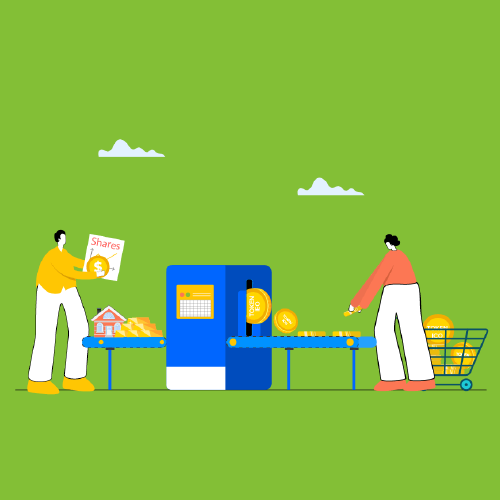Asset Tokenization on the Blockchain {A Complete Guide}

Blockchain has poised to bring a transformative difference in the finance world. The technology, with its characteristics like decentralization, immutability, transparency, and distributed structure, has added new forms of benefits and applications into the ecosystem.
One of which is asset tokenization in blockchain surface.
This concept has emerged to be one the top Blockchain technology trends by opening new doors for tokenization of anything and everything in the marketplace – be it diamond, paintings, or property.
But, how far will it take the market? Will it become a key addition to every business?
Let’s talk about it in this article – starting with a simple definition of what is tokenization.
Tokenization of Assets – Its Definition and Types
The simplest answer to what is asset tokenization on blockchain is that it is a process through which a blockchain token is issued to digitally represent any real tradable asset in a way that you can trade with a single fraction of the asset as well.
The process sounds much like Securitization and Fractional Ownership, but it holds some key differences – something we will cover just before diving deeper into the tokenized world and discussing the token types.
Tokenization vs Securitization
When talking about how tokenization is different from securitization, the former turns all the real world assets into high-liquidity digital token, whereas the latter converts low-liquidity assets into higher-liquidity security instruments that could be traded in markets and over-the counter.
Tokenization vs Fractional Ownership
Fractional ownership, unlike Tokenization, provides an opportunity to bring unrelated parties together to enjoy trading in a digital world.
With the basics of Tokenization of commodities now clear to you, let’s look into what are the types of tokens operative in the Blockchain environment.
Types of Tokens Circulated and Used in Blockchain World
To ensure that you get the best perks of investing your efforts into the development of tokenized assets, tokens are broadly divided into two basis:
1. On the Basis of Nature
- Tangible Assets – The term represents a set of assets that holds some monetary value and is available usually in a physical form.
- Fungible Assets – These digital assets are created such that every token is equivalent to the next. Meaning, one bitcoin is equal to one bitcoin and is interchangeable with one bitcoin only.
- Non-Fungible Assets – They are designed as unique and can’t be interchangeable.
2. On the Basis of Speculation
- Currency Tokens – These tokens represent currencies in digital form.
- Utility Tokens – The term refers to a digital token that is issued to support funding for the development of cryptocurrency and can be later employed for purchasing a particular product or service offered by the issuer of the cryptocurrency.
- Security Tokens –Security tokens, one of the cryptocurrency trends, is basically the digital representation of traditional securities.
Now as we are familiar with the types of tokenization of assets via distributed ledger blockchain technology, it’s the right time to look into what are the benefits of this process.
- Industry
- Art
- Causes
- Crafts
- Dance
- Drinks
- Film
- Fitness
- Food
- Games
- Gardening
- Health
- Home
- Literature
- Music
- Networking
- Other
- Party
- Religion
- Shopping
- Sports
- Theater
- Wellness
- News


